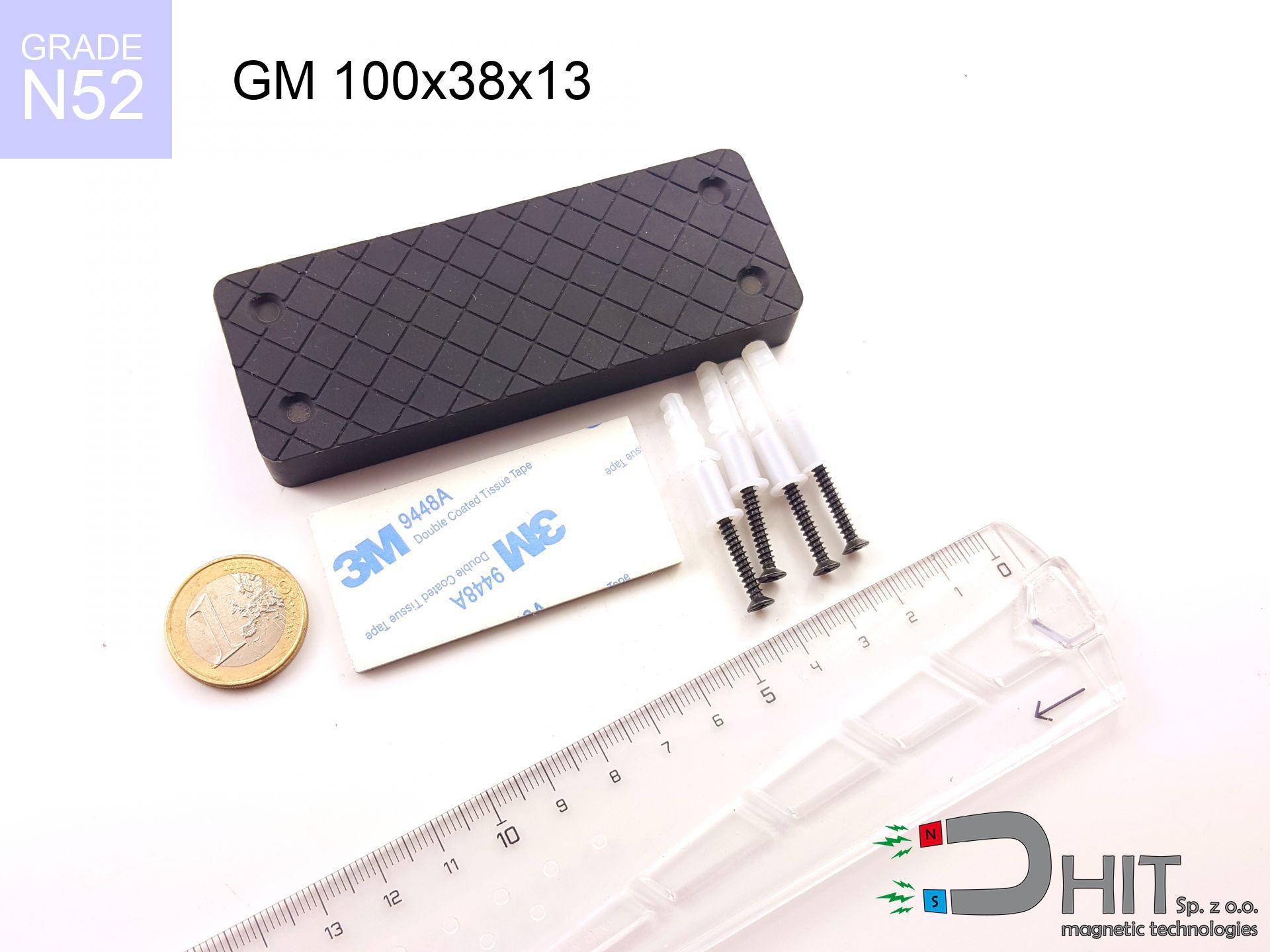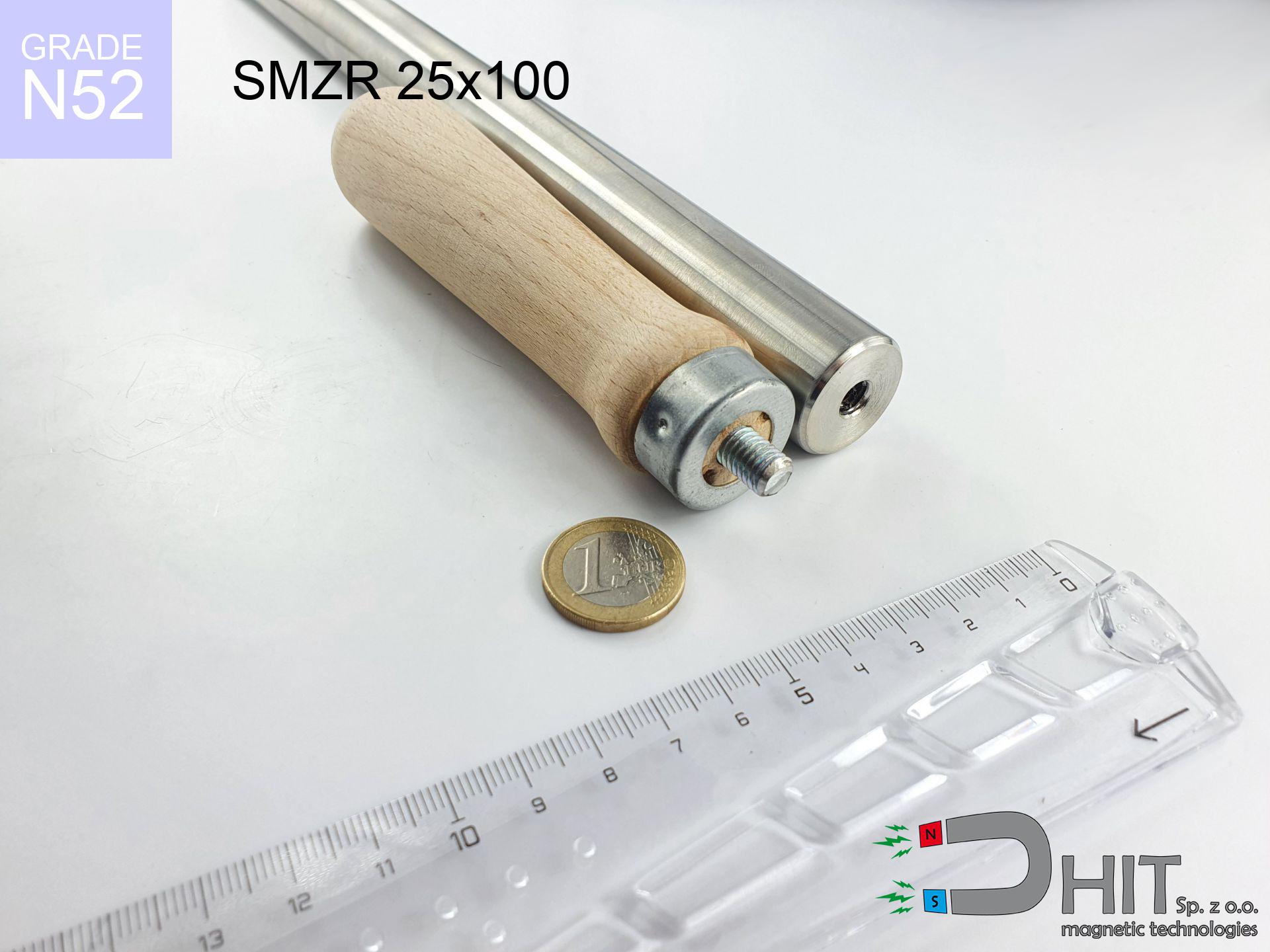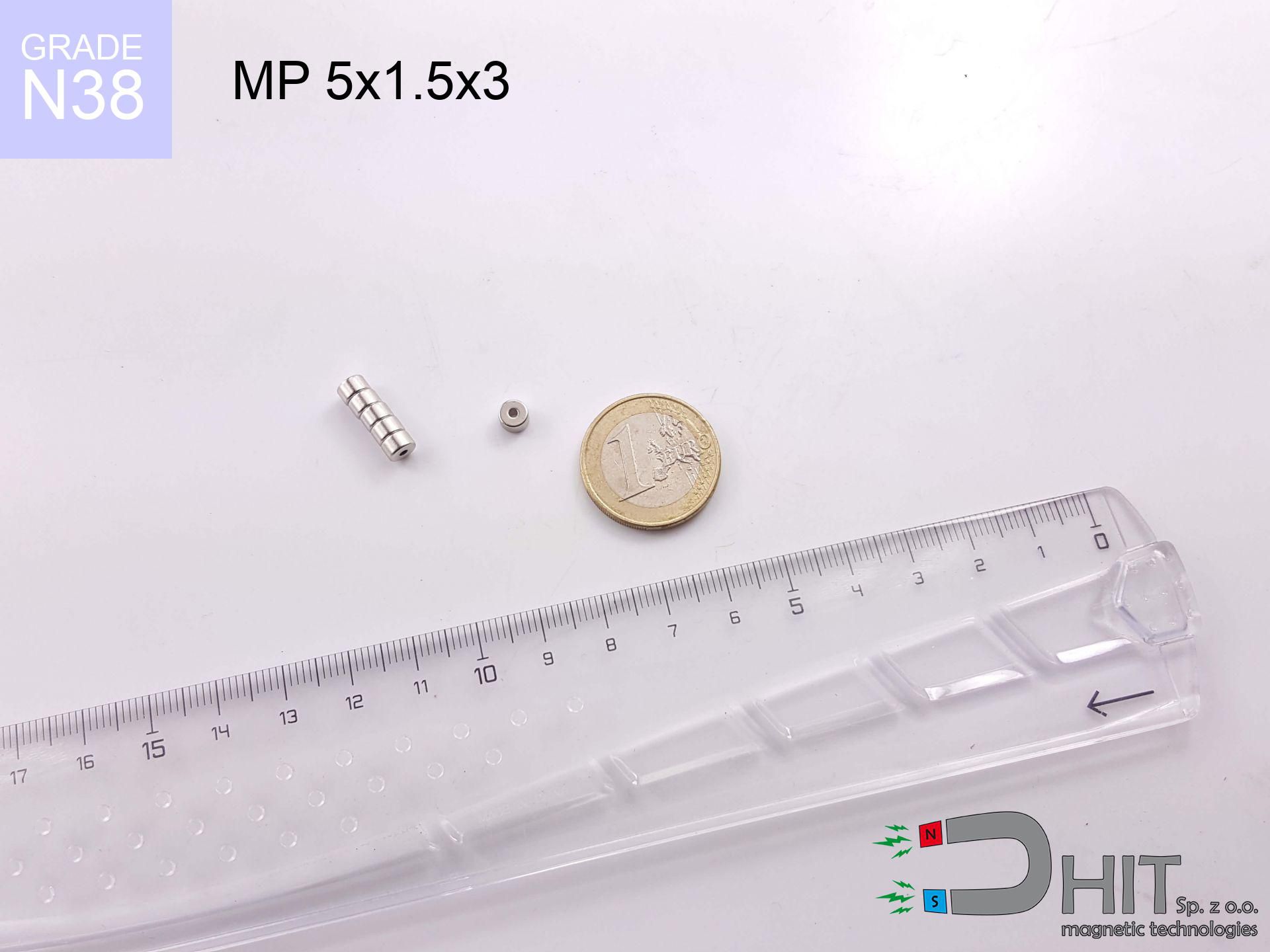GM 100x38x13 / N52 - weapon holder
weapon holder
Catalog no 330454
GTIN/EAN: 5906301814719
length
100 mm [±1 mm]
Width
38 mm [±1 mm]
Height
13 mm [±1 mm]
Weight
148 g
Magnetization Direction
↑ axial
Load capacity
5.00 kg / 49.03 N
65.50 ZŁ with VAT / pcs + price for transport
53.25 ZŁ net + 23% VAT / pcs
bulk discounts:
Need more?Want to talk magnets?
Pick up the phone and ask
+48 888 99 98 98
if you prefer contact us through
inquiry form
the contact page.
Parameters along with structure of a magnet can be checked with our
modular calculator.
Order by 14:00 and we’ll ship today!
GM 100x38x13 / N52 - weapon holder
Specification / characteristics GM 100x38x13 / N52 - weapon holder
| properties | values |
|---|---|
| Cat. no. | 330454 |
| GTIN/EAN | 5906301814719 |
| Production/Distribution | Dhit sp. z o.o. |
| Country of origin | Poland / China / Germany |
| Customs code | 85059029 |
| length | 100 mm [±1 mm] |
| Width | 38 mm [±1 mm] |
| Height | 13 mm [±1 mm] |
| Weight | 148 g |
| Magnetization Direction | ↑ axial |
| Load capacity ~ ? | 5.00 kg / 49.03 N |
| Manufacturing Tolerance | ±1 mm |
Magnetic properties of material N52
| properties | values | units |
|---|---|---|
| remenance Br [min. - max.] ? | 14.2-14.7 | kGs |
| remenance Br [min. - max.] ? | 1420-1470 | mT |
| coercivity bHc ? | 10.8-12.5 | kOe |
| coercivity bHc ? | 860-995 | kA/m |
| actual internal force iHc | ≥ 12 | kOe |
| actual internal force iHc | ≥ 955 | kA/m |
| energy density [min. - max.] ? | 48-53 | BH max MGOe |
| energy density [min. - max.] ? | 380-422 | BH max KJ/m |
| max. temperature ? | ≤ 80 | °C |
Physical properties of sintered neodymium magnets Nd2Fe14B at 20°C
| properties | values | units |
|---|---|---|
| Vickers hardness | ≥550 | Hv |
| Density | ≥7.4 | g/cm3 |
| Curie Temperature TC | 312 - 380 | °C |
| Curie Temperature TF | 593 - 716 | °F |
| Specific resistance | 150 | μΩ⋅cm |
| Bending strength | 250 | MPa |
| Compressive strength | 1000~1100 | MPa |
| Thermal expansion parallel (∥) to orientation (M) | (3-4) x 10-6 | °C-1 |
| Thermal expansion perpendicular (⊥) to orientation (M) | -(1-3) x 10-6 | °C-1 |
| Young's modulus | 1.7 x 104 | kg/mm² |
Material specification
| iron (Fe) | 64% – 68% |
| neodymium (Nd) | 29% – 32% |
| boron (B) | 1.1% – 1.2% |
| dysprosium (Dy) | 0.5% – 2.0% |
| coating (Ni-Cu-Ni) | < 0.05% |
Sustainability
| recyclability (EoL) | 100% |
| recycled raw materials | ~10% (pre-cons) |
| carbon footprint | low / zredukowany |
| waste code (EWC) | 16 02 16 |
View also offers
Pros as well as cons of rare earth magnets.
Strengths
- They retain magnetic properties for nearly 10 years – the drop is just ~1% (in theory),
- They maintain their magnetic properties even under close interference source,
- Thanks to the metallic finish, the surface of Ni-Cu-Ni, gold-plated, or silver-plated gives an aesthetic appearance,
- Magnetic induction on the working part of the magnet is exceptional,
- Neodymium magnets are characterized by very high magnetic induction on the magnet surface and can function (depending on the shape) even at a temperature of 230°C or more...
- Due to the ability of accurate molding and adaptation to specialized requirements, NdFeB magnets can be created in a wide range of shapes and sizes, which increases their versatility,
- Universal use in modern technologies – they are used in mass storage devices, brushless drives, diagnostic systems, and industrial machines.
- Thanks to their power density, small magnets offer high operating force, occupying minimum space,
Disadvantages
- They are fragile upon heavy impacts. To avoid cracks, it is worth securing magnets in special housings. Such protection not only shields the magnet but also improves its resistance to damage
- NdFeB magnets lose force when exposed to high temperatures. After reaching 80°C, many of them experience permanent weakening of power (a factor is the shape and dimensions of the magnet). We offer magnets specially adapted to work at temperatures up to 230°C marked [AH], which are extremely resistant to heat
- Due to the susceptibility of magnets to corrosion in a humid environment, we suggest using waterproof magnets made of rubber, plastic or other material stable to moisture, in case of application outdoors
- Due to limitations in producing nuts and complex forms in magnets, we recommend using casing - magnetic holder.
- Possible danger to health – tiny shards of magnets can be dangerous, if swallowed, which gains importance in the aspect of protecting the youngest. It is also worth noting that tiny parts of these magnets are able to be problematic in diagnostics medical when they are in the body.
- With large orders the cost of neodymium magnets is a challenge,
Holding force characteristics
Maximum lifting force for a neodymium magnet – what it depends on?
- on a base made of mild steel, effectively closing the magnetic flux
- with a cross-section no less than 10 mm
- characterized by lack of roughness
- with total lack of distance (no coatings)
- under perpendicular force vector (90-degree angle)
- at temperature approx. 20 degrees Celsius
Practical aspects of lifting capacity – factors
- Distance (between the magnet and the plate), since even a tiny distance (e.g. 0.5 mm) results in a decrease in force by up to 50% (this also applies to varnish, rust or dirt).
- Force direction – remember that the magnet holds strongest perpendicularly. Under shear forces, the capacity drops drastically, often to levels of 20-30% of the nominal value.
- Steel thickness – too thin steel causes magnetic saturation, causing part of the flux to be escaped into the air.
- Material type – the best choice is pure iron steel. Cast iron may generate lower lifting capacity.
- Surface finish – full contact is possible only on smooth steel. Any scratches and bumps create air cushions, weakening the magnet.
- Thermal environment – heating the magnet results in weakening of force. Check the thermal limit for a given model.
Holding force was measured on the plate surface of 20 mm thickness, when a perpendicular force was applied, whereas under attempts to slide the magnet the load capacity is reduced by as much as fivefold. Additionally, even a minimal clearance between the magnet’s surface and the plate decreases the holding force.
Health Danger
People with a heart stimulator should keep an large gap from magnets. The magnetic field can interfere with the operation of the implant.
Do not overheat magnets
Do not overheat. Neodymium magnets are susceptible to heat. If you need resistance above 80°C, ask us about special high-temperature series (H, SH, UH).
Mechanical processing
Machining of NdFeB material poses a fire hazard. Neodymium dust reacts violently with oxygen and is hard to extinguish.
Pinching danger
Mind your fingers. Two powerful magnets will join instantly with a force of several hundred kilograms, crushing everything in their path. Exercise extreme caution!
Protect data
Data protection: Strong magnets can damage data carriers and sensitive devices (pacemakers, medical aids, timepieces).
Precision electronics
Note: neodymium magnets produce a field that interferes with sensitive sensors. Keep a separation from your phone, tablet, and navigation systems.
Handling guide
Exercise caution. Neodymium magnets attract from a long distance and connect with huge force, often quicker than you can react.
Material brittleness
Despite metallic appearance, the material is brittle and cannot withstand shocks. Do not hit, as the magnet may shatter into sharp, dangerous pieces.
Choking Hazard
Always keep magnets away from children. Ingestion danger is high, and the consequences of magnets connecting inside the body are life-threatening.
Warning for allergy sufferers
Nickel alert: The Ni-Cu-Ni coating contains nickel. If an allergic reaction appears, cease working with magnets and wear gloves.




![SM 32x275 [2xM8] / N42 - magnetic separator SM 32x275 [2xM8] / N42 - magnetic separator](https://cdn3.dhit.pl/graphics/products/sm-32x275-2xm8-hac.jpg)

![SM 32x450 [2xM8] / N42 - magnetic separator SM 32x450 [2xM8] / N42 - magnetic separator](https://cdn3.dhit.pl/graphics/products/sm-32x450-2xm8-bex.jpg)

